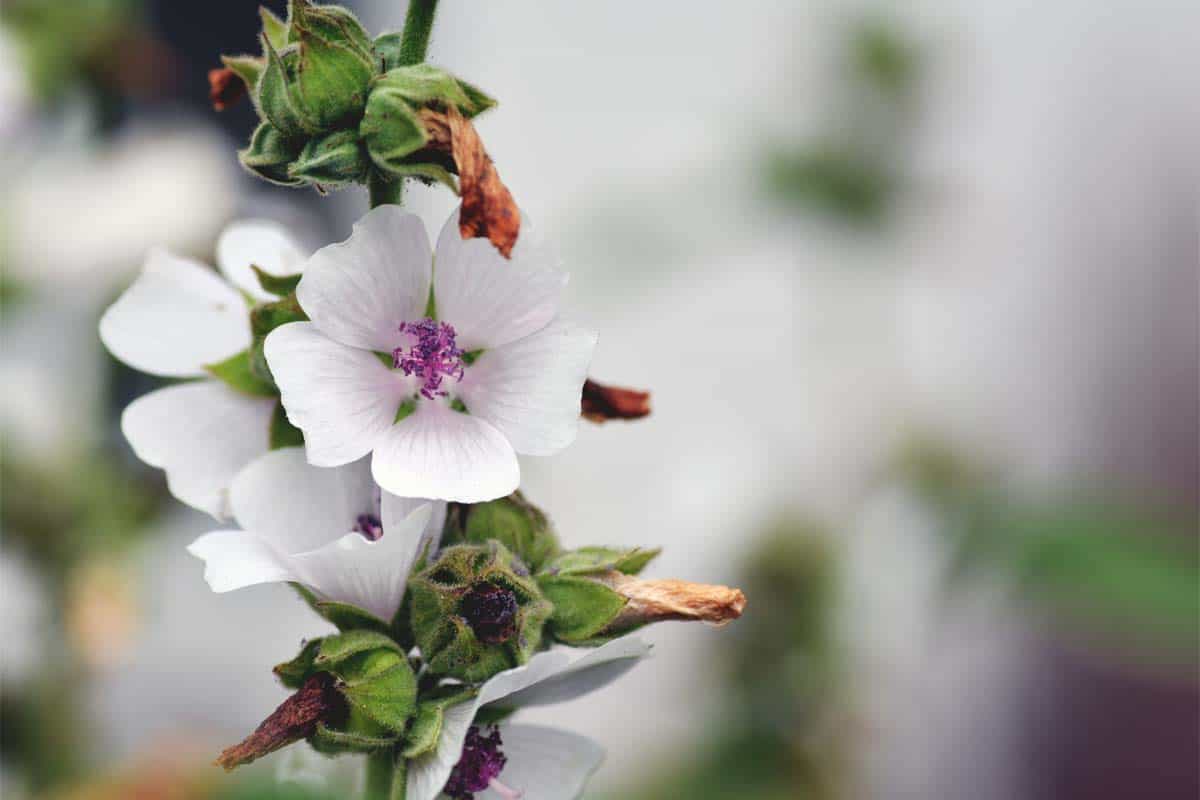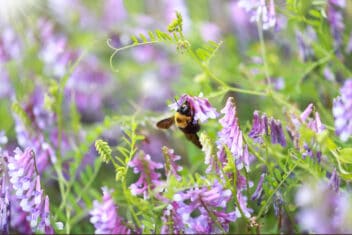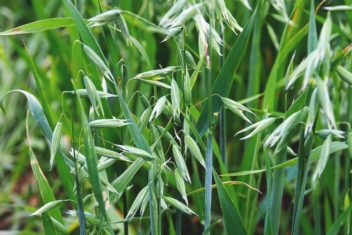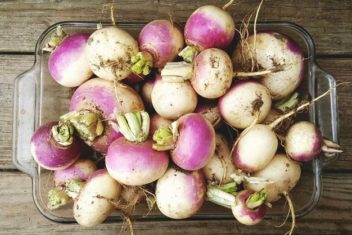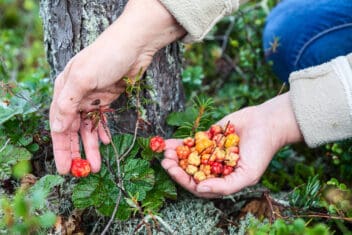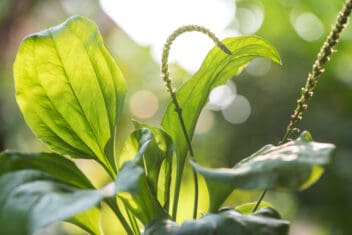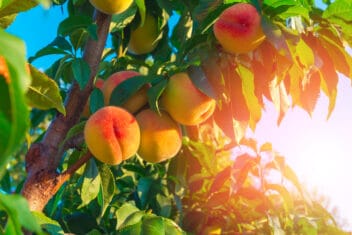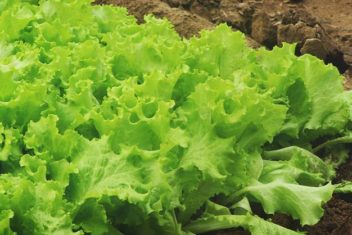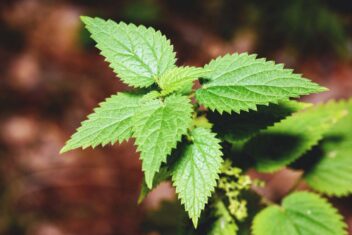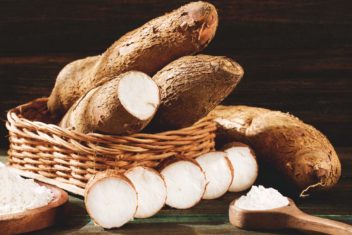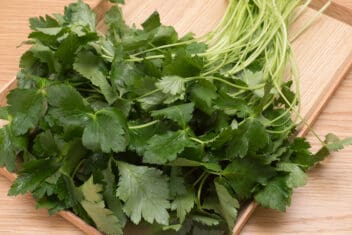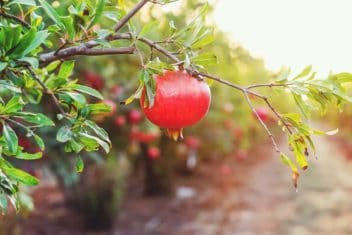Ever thought of growing marshmallows at home? I don’t mean the creamy treats that you put in your hot chocolate, but the marshmallow plant that blooms with showy white flowers throughout the summer.
Your kids might not be as excited about the marshmallow plant as they are the dessert, but Althaea officinalis once grew in many backyard gardens, and it’s worth having around.
The roots of this plant contain mucilage, which can be used to thicken recipes, sort of like gelatin. Marshmallow also has medicinal properties. Of course, you can also eat the plant, and it was the inspiration for the sweet treat we know today.

What Is Althaea officinalis?

Marshmallow is a perennial flowering plant that grows in damp areas. It stands 3-4 feet high with a branched stem. The leaves are soft and hairy with three divisions, sort of like a maple leaf.
Along the upper stalk, beautiful flowers appear. The flowers have five heart-shaped petals that range in many colors, from white to pink or mauve. These flowers appear in late summer from July to September.
For centuries, it grew wild in sunny, cool locations, such as along the edges of lakes or marshlands. You can still find it wild or naturalized in some places.
Planting Marshmallows
Planting marshmallow plants in your garden takes a bit more consideration than other plants. Take a look at what you need to know.
Growing Zones
The marshmallow plant grows well in USDA hardiness zones 3-9.
Sun Requirements
You can place these plants in either partial shade or full sun.
Soil Requirements
Wherever you plant, make sure it’s a moist spot. It is called “marsh” mallow after all. That doesn’t mean the plant wants to be underwater or in a thick swamp, but it does like continuously moist soil.
Making the right soil for your plants isn’t too tricky. Marshmallow plants prefer to be growing in sandy, moist soil. It doesn’t like soil that dries out too fast, so you’ll want to add compost to your ground if it doesn’t retain moisture well.
Marshmallow plants don’t care about the pH level of the soil, which makes it easier for gardeners to create the right dirt.
Growing Marshmallow From Seeds
Most gardeners opt to grow marshmallows from seeds since nurseries rarely sell these seedlings. To start the plants from seeds, sow them in damp peat moss inside of a plastic bag and put the seeds in the refrigerator for 4-6 weeks.
Doing this might seem weird, but it’s necessary to encourage germination when you plant the seeds into the garden. It’s a process called stratification.
When to Plant
If you live in an area with mild winters, you can plant the seeds in the fall and expect the blossoms to appear next summer. You should still use the refrigerator process if you live in an area with harsh winters.
In the spring, plant the seeds into your garden as soon as the ground can be worked. Typically, plan to plant the seeds into the garden 2-3 weeks before the last frost date.
Once planted, be sure to keep the soil moist until the seeds germinate. Marshmallow seeds take time to germinate, typically several weeks. Don’t get frustrated; the seeds will eventually sprout.
Spacing
Sow the seeds into the ground in groups of 5-6, but make sure you don’t place them too deeply into the ground. Each group of seeds should be set 18-24 inches apart.
Growing Marshmallows From Cuttings
Another option is to grow this plant from root divisions or cuttings. You can take cuttings from the roots in summer, so long as you keep the ground damp. You also can divide the roots in the fall after the plant dies back down.
Take a sharp shape or garden knife and slice down through the root mass. Then, take a part of the roots to plant elsewhere in your garden or share with your friends. Make sure to fill the space where you removed the roots with fertile soil.
Growing Marshmallow in Containers
Theoretically, you could grow marshmallow plants in containers, but since these are perennials, they do best in the ground. Most gardeners who give this a try report that it’s not nearly as successful as they hoped.
Caring for Marshmallow
Since marshmallow plants are perennials, the real key is taking great care of them for the first 2-3 years of life. Once well-established, their care can be reduced, and their sturdiness will keep them surviving for years to come.
Watering Marshmallow Plants
These plants need to stay well-watered for the first year to allow the plants to become established. Plan to water weekly, supplying at least 1-2 inches of water per week, minimum.
Keeping a rain gauge nearby helps you determine how much water your plants still need. While marshmallow plants love moist soil, they don’t like standing water, so you need to walk a close line.
Mulching Around Plants
It’s best to mulch well around the plants, typically with 3-4 inches of mulch. Doing so helps to discourage the growth of weeds that might compete for nutrients from the soil.
Also, applying mulch around your plants helps the soil to retain moisture. That means you don’t need to water your plants as often, which is great because we know that these plants love the moist ground.
Fertilizing The Plants
You don’t need to stress around fertilizing these plants too often. When you plant the seeds or seedlings into your garden, you should consider adding compost to the soil to add vital nutrients needed for growth.
Otherwise, you can add a general 10-10-10 organic fertilizer to your garden during the blooming months in the summer. This is the only time that the plant needs a boost. Make sure not to add any fertilizers near the fall because the plants are heading towards their dormancy period.
Common Pests Diseases for Marshmallow Plants
One advantage of growing marshmallow plants is that most pests leave them alone. Chances are you won’t have any pest problems to handle, but here’s what to watch for.
Flea Beetles
Flea beetles are one of the few pests that might bother marshmallow plants, but it can be hard to spot them. They’re tiny, measuring between 1/16 to 1/8 of an inch. Flea beetles are black, brown, or even metallic grey.
Adult flea beetles become active in the early spring. They lay eggs in small holes, and the larvae feed on the roots of the plants. You’ll eventually notice the damage caused by these pests when they start to leave small, irregular holes in the leaves. Most of the holes are tiny.
Pay the closest attention in the spring. Check plants regularly for damage and remove any old debris that might protect the beetles. You can use row covers and screens to keep the beetles out when the seedlings are little. Another option is to use a pesticide labeled for treating flea beetles.
Rust
Marshmallow is a cousin to the hollyhocks family, which is prone to rust. Common rust is a fungal disease that attacks a variety of plants.
The symptoms generally start to appear on the surfaces of the lower leaves. At first, this disease appears as white, raised spots on the underside of leaves and the stem. Soon, these spots become covered with reddish-orange spores. Over time, leaf pustules turn yellow-green and eventually black.
To help conquer rust infections, pick off and remove all infected leaves and remove all fallen debris around the plant regularly. Avoid watering overhead, and apply copper sprays or a sulfur powder. You also can use a broad-spectrum bio-fungicide that uses Bacillus subtillis as a way to combat the rust infection.
Harvesting and Using Marshmallow Plants
Harvest the leaves after flowering, and make sure to dry them thoroughly. If you want to harvest the roots, do so in late fall before the ground starts to freeze. Make sure to clean the roots of fibers and cork and chop the roots into 1/2 inch pieces. Then, dry the pieces immediately.

Wait until the 2nd or 3rd year of growing marshmallow to harvest roots. Dried roots are the most commonly used parts of this plant. When the plant is in season, the leaves and flowers can either be harvested and eaten fresh or dried for medicinal purposes.
The leaves, flowers, roots, and seeds of the marshmallow plants are edible. The roots are delicious raw, and you can also add them to soups and stews as a thickener.
The leaves and flowers can be used the same way, or you can add them to salads and desserts. The plant has a lovely sweet flavor. Try frying the blossoms for a real treat.
Herbalists use this plant to cure dozens of ailments, such as:
- Upset stomach
- Constipation
- Fever
- Acne
- Inflammation
- Cuts
- Bronchial spasms

In particular, the leaves and root make a thick tea that does wonders for sore throats and coughs.
Growing Marshmallow in Your Garden
While it might not be the most common herb, you should consider growing marshmallow plants in your garden. These perennials grow back each year with a beautiful display of flowers in the summer months. Later, you can take advantage of all the medicinal properties that the plants have to offer.
